|
Guest post by Kristina Wojtaszek. I peer out my kitchen window through the delicate, perfect angles of a spider’s web, and I’m instantly caught. I glimpse the triangle of a mummified butterfly and try to imagine it didn’t just twitch. The spider hangs in suspension, the setting sun put to shame by the splash of orange on her abdomen. How does the spider know to cast her lines so straight? What keeps them parallel? Was her affinity for geometry handed down from ancient arachnid ancestors? Was there once a spider who cast its lines in tangled circles and died of starvation? I know this much; a spider’s web must be anchored. The wind blows and the dying butterfly flails, feeling the last thrill of a gust, but remains held tight, prisoner of an elastic silk with the tenacity of steel. Still, the whole thing would sail away to serve as a personal parachute if it weren’t anchored securely to a stable scaffold. Fiction can be as gossamer and as strong. A good story distracts with its own flurry of measured energy, outlining a new window to look through; a reshaping of the world. But there are anchor points in the author’s mind. We have to start from a scaffold of experience, from the stripped corners of a real life. No one has to know what those anchor points are; some of us go to great lengths to distract with literary acrobatics and stunning tapestry. But every now and then a reviewer strums the right thread, and the line quivers all the way back to the starting point– the point of non-fiction. That happened to me today as I read a review of my short story in the newly released Scarecrow by Rhonda Parrish. The title, A Fist Full of Straw, and perhaps the unnamed characters, reminded reviewer Eric Kimminau from Tangent of the Man With No Name film series (otherwise known as the Dollars Trilogy), directed by Sergio Leone and starring Clint Eastwood. You can read the review here. The man with no name. There was once a man whose name I chose not to know. That may sound funny, but when you’ve reached the point where you know you should know someone’s name and don’t, you can either laugh it off and ask, or not. I decided at the time that this individual should remain nameless to me. I wrote a poem about it all. Then one day the poem metamorphosed into a story of a scarecrow; a nameless one, of course. The scaffold matters little. It’s the patterned strings of sunlight I hope you’ll get tangled in if you choose. But it’s sometimes a little eerie how the movement on the lines resonate. And again I wonder what the god-like spider is thinking as she hangs from the center of my world, my offerings of self bound in perfectly woven packages, still twitching. This post originally ran on Twice Upon A Time on August 30, 2015.  Kristina Wojtaszek grew up as a woodland sprite and mermaid, playing around the shores of Lake Michigan. At any given time she could be found with live snakes tangled in her hair and worn out shoes filled with sand. She earned a bachelor’s degree in Wildlife Management as an excuse to spend her days lost in the woods with a book in hand. Now a mother of two little tricksters and their menagerie of small beasts, she continues to conjure bits of fantasy during the rare spell of silence. Her fairy tales, ghost stories, poems and YA fiction have been published by World Weaver Press, Far Off Places and Sucker Literary Magazine. Follow her @KristinaWojtasz or on her blog, Twice Upon a Time. “Lyrical, beautiful, and haunting … OPAL is truly a hidden gem. Wojtaszek [is] a talented new author and one well worth watching.” — YA Fantastic Book Review
0 Comments
Win it before you can buy it. We're giving away three Advance Reader Copies of the Far Orbit Apogee paperback to Goodreads members. And be sure to add it to your "to-read" lists when you enter!
Goodreads Book GiveawayFar Orbit Apogeeby Bascomb JamesGiveaway ends October 01, 2015. See the giveaway details at Goodreads.
All three volumes of Rhonda Parrish's Magical Menageries could be yours! Enchanted Conversation: A Fairy Tale Magazine is hosting a giveaway of Fae, Corvidae, and Scarecrow. This ebook three-pack is open to readers worldwide. Closes to entries Sep. 26, at 11:59 Eastern Time, so don't delay!
Guest post by Amalia Dillin. 1) Ultimate Thor (Marvel's Ultimates) Ultimate Thor made Thor relevant to me and the modern world in a way that captivated me. It wasn't until I read The Ultimates that I really felt any connection or understanding of Thor at all. But suddenly, there he was, trying to save the whales and the environment and the world, and it just RESONATED. Hippy, Tree-Hugging Thor. It made so much sense to high-school-me, and it was BECAUSE of this reinterpretation of Thor's character that I started looking for Thor's other incarnations, within Marvel and without. Ultimate Thor is the source of all my #ThorLove. 2) Mythological Thor Because he is so much more complex than he at first appears. From his relationship with Loki, to his role as the god of the Everyman, the god of the Peasant, to his position as Guardian for the Aesir, Asgard, and humanity. He is fascinating, and the more I read of the myths and the sagas, the more I really appreciate why he was so beloved to the Norse.  JMS's Thor JMS's Thor 3) JMS's Thor When Thor's main title was relaunched in 2007, he was written by J. Michael Straczynski. The opening of that new series blew me away, when Thor, in the void of not-quite-death, is resurrected by his sometime-host, Donald Blake, who tells him, it is for MEN to decide when the gods are no longer needed. Thor comes back, and brings Asgard with him -- to Oklahoma. If you haven't read Volume One of JMS's run on Thor, I'm telling you right now you're missing out. And not just on Thor. There's also Lady Loki to consider. 4) Marvel's Movieverse Thor Chris Hemsworth embodies Thor so perfectly it boggles the mind. And his gentle affection for Jane, his love of his friends, even at his most arrogant -- it's heart-melting. The shirtless Thor shot doesn't hurt either, if I'm being honest. When Hemsworth was first cast, I wasn't 100% sure of him -- I must have rewatched the first 15 minutes of New Trek a dozen times just to reassure myself that he had the POTENTIAL. He was so skinny! But I can't imagine anyone else cast in the role, now, and the first movie did a fantastic job of translating the comic and Thor to the live action screen. Thor: The Dark World doesn't disappoint, either!  5) Thor from Fate of the Gods, of course! Thor is absolutely my favorite character to write. I love how thick with honor he is, and the way he tortures himself with it. I love the relationships he forms, and his loyalty, so hardened, and ultimately, so brittle -- when it breaks, it shatters, and there is no piecing it back together again. I love his capacity for love, and the way he doesn't always make the right choices, even for the best reasons. Sometimes, he's selfish. Sometimes, he believes he's helping, but the result is just more pain for himself and the people he loves most. I love that he will never abandon his people, even when they abandon him. More than anything, I love the idea that Thor has a place in our world, a purpose beyond anyone's understanding. I loved fitting him and his myths into the big puzzle that is the theology and philosophy of our modern world. I loved finding a home for him here. And I hope that you'll love him, too! Some other Thor incarnations you might love, (just) outside of my top 5:
 Amalia Dillin began as a Biology major before taking Latin and falling in love with old heroes and older gods. After that, she couldn't stop writing about them, with the occasional break for more contemporary subjects. Her short stories have been published by Daily Science Fiction and Birdville magazine, and she's also the author of the FATE OF THE GODS series and HONOR AMONG ORCS, the first book in the Orc Saga. Amalia lives in upstate New York with her husband, and dreams of the day when she will own goats -- to pull her chariot through the sky, of course. Learn more about Amalia at www.amaliadillin.com.  By Bascomb James. Trader-adventure stories have always been well-received by readers of Grand Tradition stories because of their action-adventure elements. Some of the best-known SF Trader tales are those of the Polesotechnic League series by Poul Anderson, featuring sweeping tales of the well-heeled Nicholas van Rijn and his associate David Falkayn who use their wits and a whatever-it-takes approach to make a profit. Another take on the trader-adventure story is epitomized by Andre Norton’s novels describing the travails of the crew of the Solar Queen, a small independent interstellar trade ship whose owners always appear to be teetering on the edge of insolvency. Author Kat Otis’ story “Obsidianite” fits well within the merchant adventure profile. In “Obsidianite,” Janessa’s profit, pride, and personal history mix explosively on the side of a volcano. Kat Otis lives a peripatetic life with cats who enjoy riding in the car as long as there’s no country music involved. Her fiction has appeared in Orson Scott Card’s Intergalactic Medicine Show, Daily Science Fiction and Marion Zimmer Bradley’s Sword & Sorceress XXVI. She can be found online at katotis.com or on Twitter as @kat_otis.dit. Obsidianiteby Kat Otis The moment the Bonadventure emerged from FTL, Janessa began calling up system reports.
It wasn’t that she didn’t trust her newest pilot—Darion was better than her last three pilots combined. But Darion was also still young and didn’t have much experience with interstellar travel. Anyone with half an understanding of calculus could throw together coordinates for a basic FTL jump; the difficult part was making the dozens of ship-specific adjustments required to make the jump without damaging said ship. One of the Bonadventure’s aft sensor arrays was especially prone to shearing off in transit—she’d owned the ship for seven years and lost as many arrays in the same time period. “I didn’t botch the calculations, Jan.” Darion drummed his fingers on the arm of his chair. “All systems should be green to go. Will you stop fussing and check out the planet? I think that transmission really was a distress call.” Read the full story in Far Orbit: Speculative Space Adventures . . . World Weaver Press is pleased to announce The Falling of the Moon, book one of the Moonfall Mayhem series by A. E. Decker, will be available in trade paperback and ebook Tuesday, October 27, 2015.
In the gloomy mountains of Shadowvale, Ascot Abberdorf is expected to marry a lugubrious Count and settle down to a quiet life terrorizing the villagers. Instead, armed with a book of fairy tales, her faithful bat-winged cat, and whatever silverware she can pinch, Ascot heads east, to the mysterious Daylands, where her book promises she can find True Love and Happily Ever After, if she only follows her heart. Determined to win the hand of Prince Parvanel, Ascot storms the Kingdom of Albright. With the book’s guidance, she’s confident she’ll overcome any obstacles the imperious Queen Bettina Anna throws in her way, be they witches, evil stepmothers, or Big Bad Wolves. Unfortunately, the book doesn’t cover reluctant princes, wolves who read Dostoyesvsky instead of blowing down houses, or a guild of Godmothers whose motivations may not be as pure as three drops of blood on a sweep of snow. Most annoying of all is the captain of the guard who swears he’ll see the moon fall before she weds Prince Parvanel. There are stories . . . and then there are stories, and if her parade of shifty shenanigans continues, Ascot might have to rewrite her own tale lest she end most Unhappily Ever After! Pre-order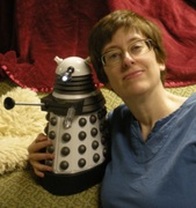 A. E. Decker hails from Pennsylvania. A former doll-maker and ESL tutor, she earned a master’s degree in history, where she developed a love of turning old stories upside-down to see what fell out of them. This led in turn to the writing of her YA novel, The Falling of the Moon. A graduate of Odyssey 2011, her short fiction has appeared in such venues as Beneath Ceaseless Skies, Fireside Magazine, and in World Weaver Press’s own Specter Spectacular. Like all writers, she is owned by three cats. Come visit her, her cats, and her fur Daleks at wordsmeetworld.com. Want to be part of The Falling of the Moon cover reveal team? Sign up here.
By Sarena Ulibarri. Last summer at the Clarion Writers’ Workshop, someone asked our classmate from Singapore to describe what it was like where he was from. He raved about the amazing biodomes, and having never heard of such a thing, I did an image search on my phone. I showed him the pictures I found — lush gardens and waterfalls inside crystalline domes, massive “trees” that are actually made of solar cells, a building shaped like a lotus that collects and uses only rainwater. “Yeah, that’s my ’hood,” he said. “We live in the future!” I realized that all the futures I’d been writing about for the last decade or so were bleak, starved, oppressive wastelands. I took for granted things like “all the trees are gone” and “everywhere is overpopulated.” Why? A combination of the bleak future painted by real life scientists and politicians as they fought about environmental issues, and the bleak future painted by all the cyberpunk and dystopia science fiction films and books that I loved. But this is not the only kind of future possible, either in life or in fiction. When I joined World Weaver Press as an Assistant Editor in January, I wrote this about the kind of books I hoped to publish:
I had in mind those images of Singapore, but also rooftop gardens and urban farms, electric cars and creative public transportation, rural settings that still had the latest tech. I didn’t have a name for this kind of science fiction, though I’d heard a few terms tossed around: cli-fi, eco-fabulism, eco-fiction. But recently I came across the definition of a new subgenre, solarpunk, and I said, “This is it. This is exactly what I’ve been craving.” 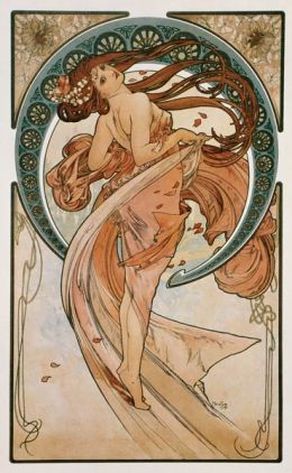 Solarpunk is a science fiction subgenre depicting a society that has embraced sustainable energy sources such as solar and wind, and shows high technology co-existing with or even complementing nature. Part of what the “-punk” suffix means is a recognizable aesthetic — the terms steampunk, cyberpunk, and dieselpunk all conjure particular images and styles even for people who haven’t read these subgenres. The aesthetic of a solarpunk world is still being defined, but a favored suggestion is Art Nouveau, a style of art and architecture based on the shapes and colors of nature. A solarpunk world is not a utopia, but the subgenre does approach the twenty-first century’s biggest issues — climate change, energy production, urbanization, resource scarcity — with optimism. Solar energy is not perfect, and it may not be the only way or even the best way to free ourselves from fossil fuels — the production of solar panels still requires fossil fuels, after all, and solar energy is nearly impossible to store. But “solar” still works as a good symbol for something like solarpunk, because it represents the brightness of a potential future, and the freedom that could come if everyone had equal access a virtually unlimited resource like the sun. It’s the role of scientists and engineers to create new technologies; it’s the role of the science fiction writer to speculate about how those technologies may interact with people and culture. It’s too easy, sometimes, for the science fiction writer to be reactionary, imagining all the things that could go wrong with a new or proposed technology. After all, fiction needs conflict, right? The last hundred years certainly saw the development of some scary technologies, but it’s possible to move beyond fear without losing story conflict. Nuclear energy can create awful, destructive weapons. Know what else it can do? Fuel desalination plants to provide water to drought-stricken areas. Drones can be used in warfare, but they can also be used to identify animal poachers, or to provide supplies to disaster areas. The silica sand that’s used in natural gas fracking is also the main ingredient in silicon solar panels, and it’s one of the most abundant resources on the planet. One way to motivate change is to make it uncomfortable for people to be where they are — that’s the strategy of dystopia: if you continue on this path, look where we’ll end up. Another way is to make it comfortable for people to be where you want them to be — that’s the strategy of solarpunk: look at this beautiful world we could build. Can science fiction directly influence science or policy? No, nor should it. But it can influence what people see as possible, and what images people default to when they think of the future. I know I’m ready for brighter visions of the future. Sarena Ulibarri, WWP Assistant Editor, earned an MFA from the University of Colorado at Boulder, and attended the Clarion Fantasy and Science Fiction Writers' Workshop at UCSD in 2014. Her short fiction has appeared in Lightspeed,NewMyths.com, The Colored Lens, Kasma SF, and elsewhere. She currently lives in New Mexico with her husband and their Welsh Corgi. sarenaulibarri.com
As we were wrapping up selection of stories for Far Orbit Apogee this year, Bascomb James explained his selection process. He'd worked to include a range of stories -- a school/juvenile story, shoot-em-up spaceship battles, thieves, space dragons, engineers, parole officers, a detective story, romance -- all sharing a deep space (or near-space) setting. While there was some hard science, he said he'd chosen to focus on character over concept, and the result had been more soft science stories. "But you know," Bascomb James told us, "if I'd wanted to go a different direction, there were probably enough submissions to make an entire military-only anthology."
The final selection of Apogee stories brushes up against the military aspect of life beyond out blue marble -- Anna Salonen's "To Defend and Keep from Harm" features a group of ex-military mercs -- nothing directly so. The Far Orbit anthology series collects fiction from a diverse new generation of writers whose stories hearken back to the Grand Tradition of mid-century space-based pulp adventure SF -- science fiction that doesn't take itself too seriously, that doesn't have to be political or deal only in weighty matters and grim futures. Fun, adventure stories where the characters use their wits and science to save the day. Space opera, as some would call it. But to others, the term space opera means exclusively space-based military stories. With Last Outpost, we're looking to create a volume in the Far Orbit series that is exclusively focused on military science fiction adventure stories, both space-based and Earth settings. We seek a range of story settings and concepts, and encourage diverse characters. Last Outpost will be open from September 15 - December 15, 2015 (details below). And if you've had your eye on submitting to Far Orbit Perigee, fear not, Perigee will still open to submissions on January 1, 2016, as volume four of the series, and will seek the kind of stories we saw in Far Orbit and Far Orbit Apogee.  World Weaver Press is accepting queries for fantasy, paranormal, and science fiction novels, novellas, and single-author collections during the month of September. This is the last open-reading period for 2015. Find details about querying on our submissions page. Below, our editors who are seeking new projects have given a few thoughts about what they'd most like to find in the slush pile. While these insights are not to be ignored, the best way to get a sense of the sort of fiction we're interested in publishing is to read some of our already published works. This month, Assistant Editor Laura Harvey notes: Things I'd like to see: I'm hoping to find richly imagined story worlds, intriguing creatures, and plucky champions. Bonus points if your protagonist takes out a pack of slavering wolves slain with nothing more than a bendy straw and some chewing gum. Assistant Editor Sarena Ulibarri says: I am primarily looking for fun, futuristic science fiction. Aliens are awesome, but other science fiction elements are welcome as well. I would love to see fleshed-out characters that represent the full spectrum of human experience, and worldbuilding (Earth or otherwise) that shows a balance between technology and nature. Rhonda Parrish, editor of the highly anticipated Fae anthology, interviews contributor Laura VanArendonk Baugh. 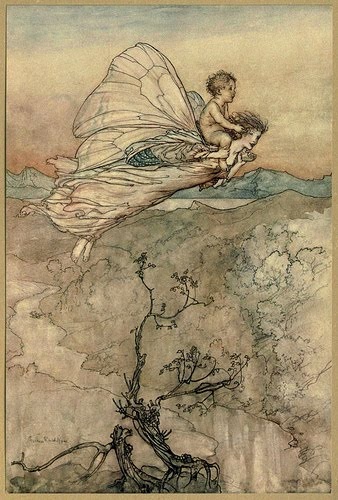 What was the inspiration for your Fae story? I’d been reading some months before on modern slavery, how there are about 29 million enslaved people today – not pinned by student loans or other things sometimes described as slavery, but real, captive, bought-and-sold slaves, used for forced labor or the sex industry. About 2 million of those are kids in the commercial sex trade. (See www.ijm.org for more information and ways to help fight modern slavery.) Meanwhile, I saw a delightful production of A Midsummer Night’s Dream at our local repertory theater, and they had a lot of fun with the fairies. Jennifer Johansen, who played Titania, is one of my favorites, and her portrayal stuck in my mind, blurring Shakespeare’s Fairy Queen with the strength of other characters Jen has played. The opening concept – immortality was evolution’s biggest mistake – had been in my idea file for years, waiting for an opportunity. And then I over-dosed on dark chocolate and everything was a blur, and when I came to, “And Only the Eyes of Children” had happened. |
World Weaver PressPublishing fantasy, paranormal, and science fiction. Archives
February 2024
|
- Home
-
Books
-
All Books
>
- Beyond the Glass Slipper
- Bite Somebody
- Bite Somebody Else
- Black Pearl Dreaming
- Cassandra Complex
- Causality Loop
- Clockwork, Curses, and Coal
- Continuum
- Corvidae
- Cursed: Wickedly Fun Stories
- Dream Eater
- Equus
- Fae
- Falling of the Moon
- Far Orbit
- Far Orbit Apogee
- Fractured Days
- Frozen Fairy Tales
- Glass and Gardens: Solarpunk Summers
- Glass and Gardens: Solarpunk Winters
- Grandmother Paradox
- Grimm, Grit, and Gasoline
- Haunted Housewives
- Heir to the Lamp
- He Sees You When He's Creepin': Tales of Krampus
- Into the Moonless Night
- Jack Jetstark's Intergalactic Freakshow
- King of Ash and Bones (ebook)
- Krampusnacht
- Last Dream of Her Mortal Soul
- Meddlers of Moonshine
- Mothers of Enchantment
- Mrs Claus
- Multispecies Cities
- Murder in the Generative Kitchen
- Recognize Fascism
- Scarecrow
- Sirens
- Shards of History
- Shattered Fates
- Skull and Pestle
- Solarpunk (Translation)
- Solarpunk Creatures
- Solomon's Bell
- SonofaWitch!
- Speculative Story Bites
- Trenchcoats, Towers, and Trolls
- Weredog Whisperer
- Wolves and Witches
- Anthologies and Collections
- Novels
- Novellas
- Fairy Tale
- Fantasy
- Romance
- Science Fiction
- Urban/Contemporary Fantasy
- Young Adult SFF
-
All Books
>
- Blog
- About
- Contact
- Press / Publicity
- Newsletter Signup
- Privacy Policy
- Store



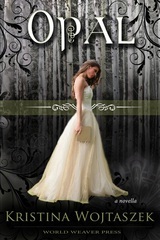
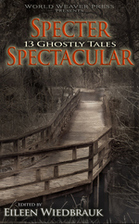



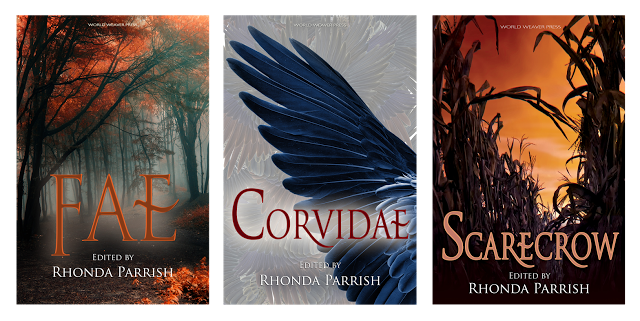


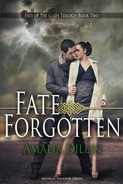
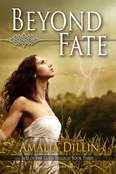
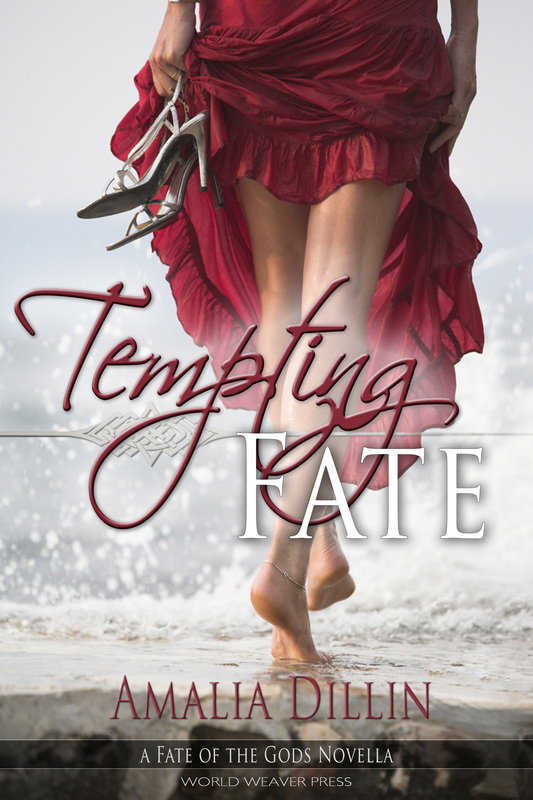
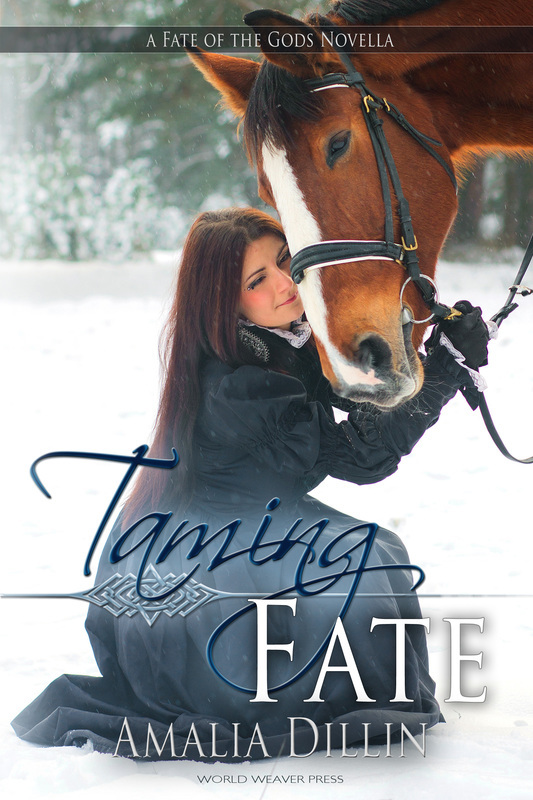


 RSS Feed
RSS Feed